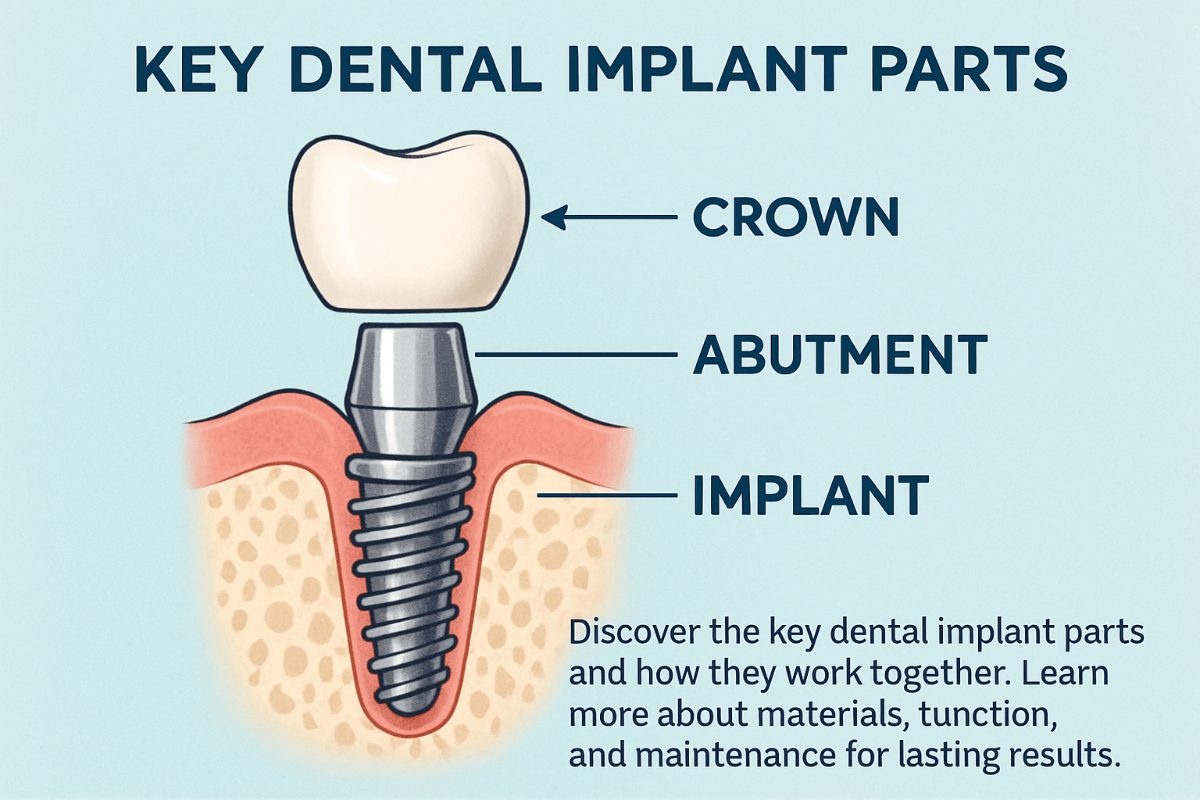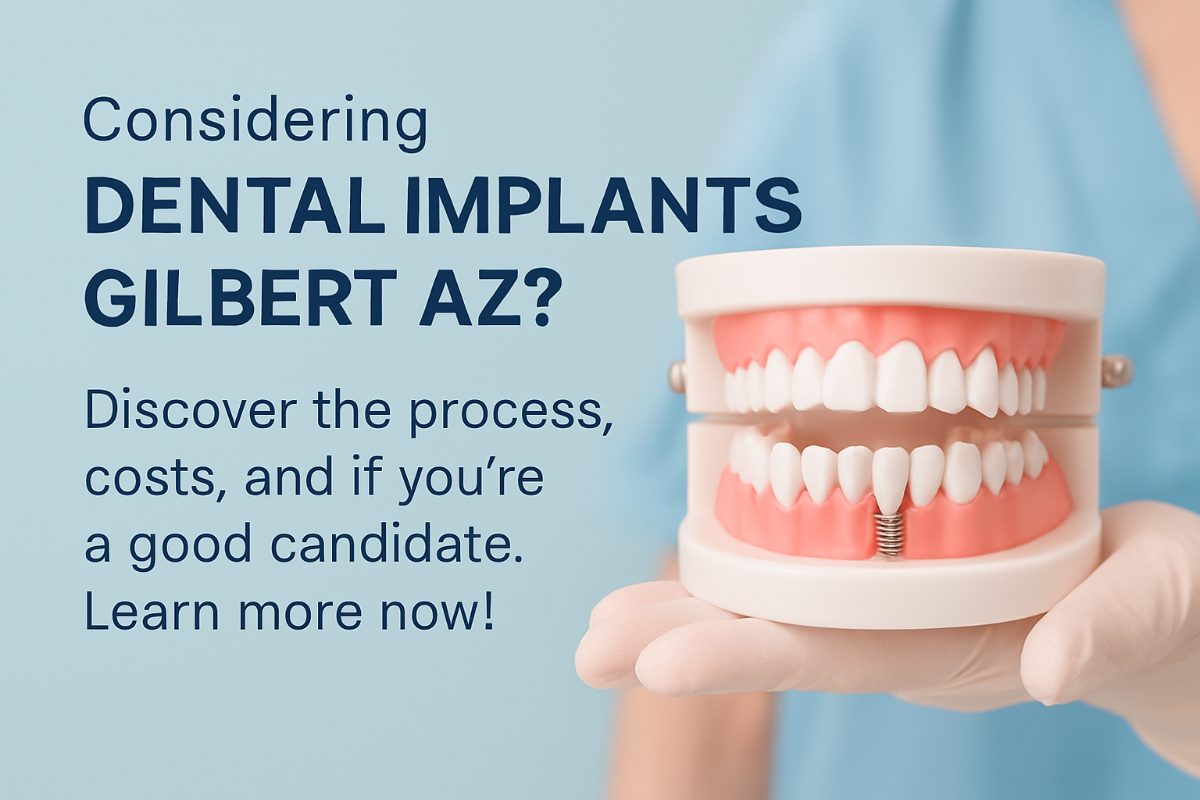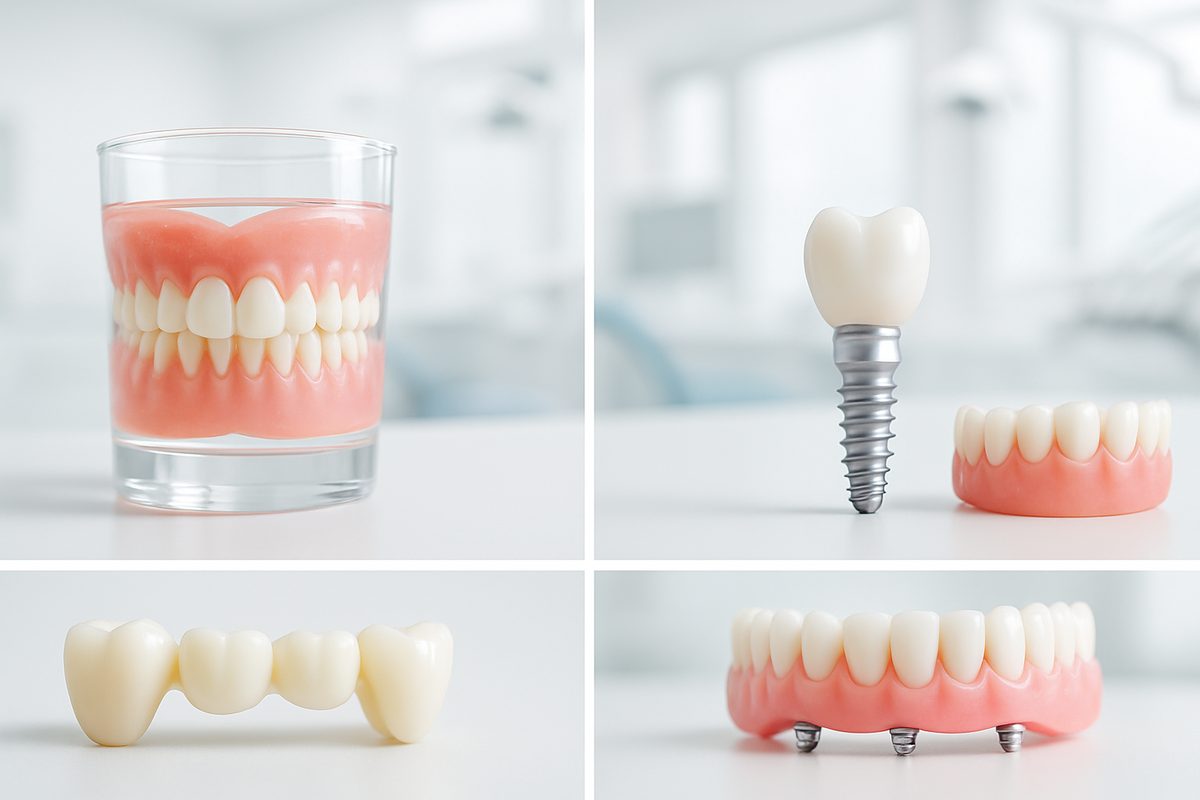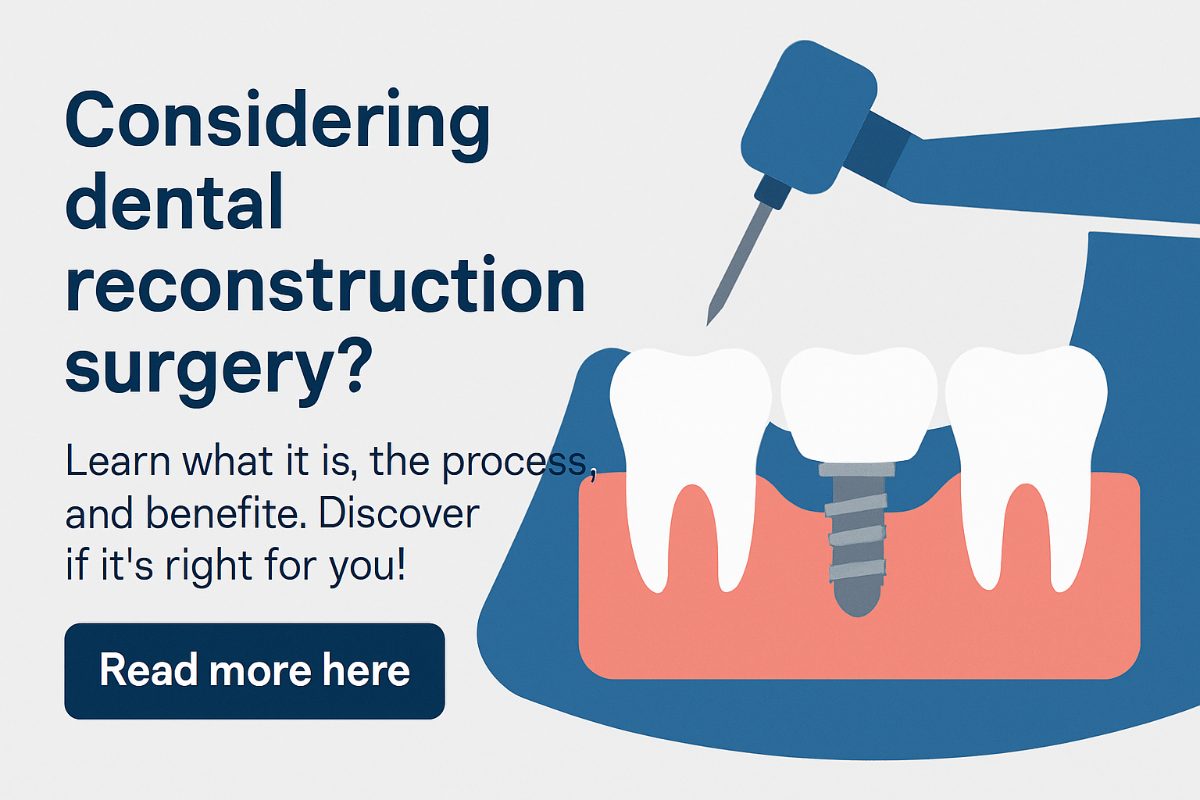Our Dental Blogs - Mesa, AZ
Tips, Facts, And The
Latest In Dentistry

How a Dentist Can Fix Your Teeth With Dental Implants In Mesa, AZ

Many people wonder how a dentist fix teeth in Mesa, AZ using dental implants. This guide explains what implants are, who can get them, the typical steps your implant dentist follows, and local options at Restore Denture and Implant Center. Read on to learn practical next steps and how to schedule a consult.
What are dental implants and how they replace teeth
Dental implants are titanium posts placed into the jaw to act as artificial tooth roots. A single implant can hold a crown to replace one tooth. Multiple implants can support bridges. For people missing a full arch, implant-supported dentures or fixed full-arch bridges attach to several implants for a stable, natural-feeling set of teeth.
A skilled dentist fix teeth with implants to restore chewing, speech, and appearance by planning implant position to match bite and lip support. Implants stop bone loss at the site of missing teeth, which helps facial structure over time.
Who is a good candidate for implants
Single tooth, multiple teeth, or full-arch needs
Treatment depends on how many teeth are missing:
- Single tooth: one implant plus a crown replaces a lost tooth without touching adjacent healthy teeth.
- Several teeth: two or more implants can support a bridge to replace a few adjacent teeth.
- Full-arch: 4–8 implants can support a removable implant denture or a fixed bridge for complete upper or lower restoration.
Health and bone considerations
Good candidates generally have controlled medical conditions, healthy gums, and enough jawbone. Common factors that affect candidacy include smoking, uncontrolled diabetes, and severe gum disease. When bone is thin or low, grafting or sinus lifts may be needed before implants. Your implant dentist will review medical history and imaging to plan safely.
Step-by-step: How a dentist will fix teeth with implants
Diagnosis and digital planning
Planning starts with a clinical exam, intraoral photos, and CBCT (3D) scans. Digital impressions capture your bite and teeth. Software combines scans to map ideal implant locations, angles, and depths to avoid nerves and sinuses and to ensure the final teeth will look and function properly.
Surgery, immediate vs delayed loading
Implant surgery can be simple or advanced. Guided surgery uses a printed surgical guide to place implants precisely. Sedation options range from nitrous oxide to IV sedation for comfort. Some patients receive temporary teeth the same day (immediate loading) when primary stability is strong. Others wait 3–6 months for osseointegration before final restoration.
Prosthetic phase
After healing, your dentist takes final scans or impressions to design crowns, bridges, or implant dentures. CAD/CAM milling or 3D printing creates custom abutments and prostheses. The lab fits and adjusts the final teeth to ensure bite, speech, and appearance are correct before delivery.
Key technologies that improve results and speed care
Modern tools make treatment more predictable and faster. Technologies commonly used include:
- CBCT/BCT 3D imaging for precise bone and nerve mapping
- In-house denture and implant lab for same-day adjustments
- 3D printing (Einstein 3D) to make surgical guides and provisional teeth quickly
- Smile simulation (PreVu®) to preview outcomes before treatment
- CAD/CAM workflows and intraoral scanning for accurate, faster restorations
These systems help a dentist fix teeth in Mesa, AZ more predictably and often with fewer visits.
Recovery, longevity, and home care
Most patients have mild discomfort for a few days after surgery. Typical recovery milestones:
- First 48–72 hours: swelling and soreness peak, use ice and prescribed meds.
- 1–2 weeks: sutures may be removed and soft tissues heal.
- 3–6 months: implants integrate with bone (varies by case).
Implants can last decades with good care. Daily brushing, flossing around implants, regular dental cleanings, and quitting smoking help protect your investment. Attend scheduled follow-up visits for checks and professional maintenance.
Cost, insurance, and financing basics
Costs vary by how many implants and the type of final restoration. Single-implant crowns, multi-unit bridges, and full-arch solutions span a range. Medical or dental insurance may cover parts of the plan, and many implant centers offer financing or monthly payment plans to spread cost. Ask for a transparent estimate and options during your consult.
Why choose a specialized implant center near Mesa, AZ
Restore Denture and Implant Center focuses exclusively on implants and dentures, combining an on-site lab and integrated digital workflow for faster turnaround and personalized care. Dr. Alyssa Mencini, DMD, completed advanced implant training, directs doctor training, and performs hundreds of full-mouth implant and denture cases annually. Their team emphasizes evidence-based, patient-centered care with sedation choices and clear pricing.
How to get started
To begin, schedule a consult with the implant team. Bring any recent dental x-rays, a list of medical conditions and medications, and photos of your smile if available. Ask about digital planning, sedation options, smile simulation (PreVu®), and expected timelines. A short visit will clarify your options and the next steps toward restored chewing, speech, and confidence.




